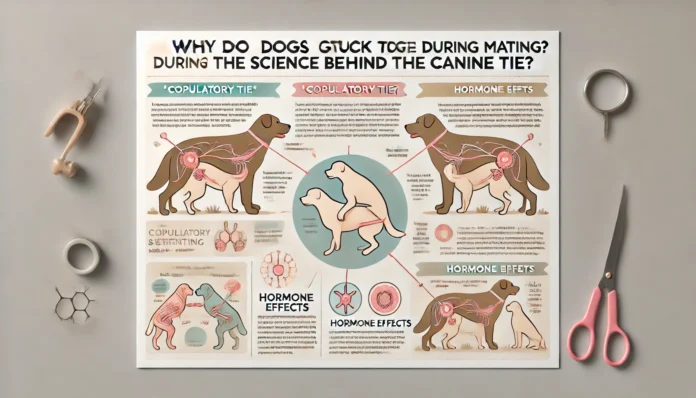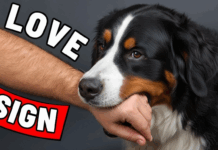Last Updated on February 22, 2025 by Dogs Vets
Witnessing dogs locked together during mating can be alarming for pet owners unfamiliar with canine reproduction. This phenomenon, known as the “copulatory tie” or “mating tie,” is a natural and instinctive part of the breeding process. But why does it happen? This article explores the anatomy, biology, and evolutionary purpose behind this behavior, addresses common myths, and provides actionable advice for dog owners.
What Is the Canine Copulatory Tie?
The copulatory tie occurs when a male dog’s bulbus glandis (a part of the penis) swells inside the female’s vagina, creating a physical lock that lasts 5–30 minutes. This ensures successful insemination and is observed in wolves, foxes, and other canids.
The Anatomy Behind the Tie
Male Anatomy: The Bulbus Glandis
- Located at the base of the penis, the bulbus glandis engorges with blood during arousal.
- Swelling secures the male inside the female, preventing withdrawal.
Female Anatomy: Vaginal Contractions
- The female’s vaginal muscles contract rhythmically, gripping the male’s penis to enhance the tie.
- These contractions also aid sperm transport toward the cervix.
The Role of Hormones
- Oxytocin: Released in both dogs during mating, this “bonding hormone” strengthens uterine contractions, promoting sperm migration.
- Progesterone: Prepares the female’s body for potential pregnancy post-tie.
Evolutionary Advantages of the Tie
- Sperm Competition: Prolonged contact reduces the chance of rival males fertilizing the female.
- Increased Pregnancy Odds: The tie allows more sperm to reach the eggs.
- Pair Bonding: In wild canids, the tie may reinforce social bonds between mates.
Common Misconceptions Debunked
- Myth 1: “The tie means the female is in pain.”
Reality: While stressful for first-time owners, the tie is typically painless unless underlying health issues exist. - Myth 2: “Dogs must be separated immediately.”
Reality: Forcibly separating them can cause severe injury. Let nature take its course.
Implications for Dog Owners
- For Breeders: Monitor the tie but avoid interference. Provide a calm environment.
- For Pet Owners: Spaying/neutering prevents unintended pregnancies.
- When to Call a Vet: If the tie exceeds 45 minutes or either dog shows distress.
Frequently Asked Questions
1. How long does the mating tie usually last?
Most ties last 10–30 minutes. Rarely, they may extend to 45 minutes.
2. Is the tie necessary for pregnancy?
While common, pregnancy can occur without a tie, though chances are lower.
3. Can you prevent the copulatory tie?
No—it’s instinctive. Spaying/neutering is the only way to avoid mating behaviors.
4. Should I try to separate stuck dogs?
Never. Forcible separation risks vaginal or penile trauma. Keep them calm instead.
5. Do neutered dogs still experience the tie?
Yes, if mating occurs shortly after neutering, residual hormones may allow a brief tie.
References
- Beaver, B. V. (2009). Canine Behavior: Insights and Answers. Elsevier.
- Concannon, P. W. (2011). “Reproductive Cycles of the Domestic Dog.” Animal Reproduction Science.
- ASPCA. (2023). “Understanding Dog Mating Behaviors.” ASPCA.org
Additional Resources
- American Kennel Club: Dog Breeding Basics
- VCA Hospitals: Canine Reproduction
- PetMD: What to Know About Dog Mating
Conclusion
The canine copulatory tie is a fascinating adaptation rooted in anatomy and evolution. While it may seem concerning, it’s a normal part of reproduction that ensures species survival. Responsible pet ownership—through education and proactive veterinary care—can help manage this natural process safely.

















